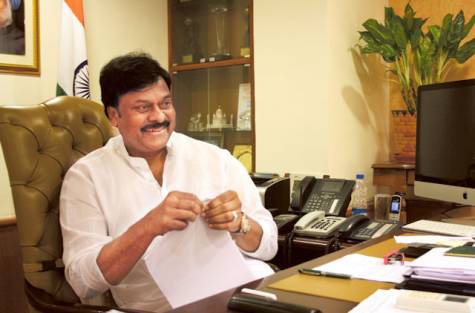MEDICAL tourism rose and developed in various nations as an economic driver and has fostered international tourism. Many governments are realizing its importance and substantial contribution to the economy and have formulated policies to aid its growth and arrange for mechanisms for investment opportunity and support.
Medical tourism constitutes a new industry created as the result of the rapid development of two leading industries – tourism and healthcare. These are relatively young and developed mainly during the 20th century. They are the result of the advancement in transportation, communications, the growth in leisure time and the translation of knowledge and knowhow, especially medical, into accessible and available services. Each of these industries is vital for the supply of this highly desired “product.” (Bookman: 2007)
Medical tourism is “niche” tourism and targets a very specific and upscale market: a patient in need of treatment that requires unique specialization that can be found only in a handful of medical centers.
Germany, Singapore, India, and Thailand are just few of the countries that are known for rapid medical tourism growth over the years providing unique medical and health care specializations. To compete in this market, the level of hospital services and health care, professional medical services, intensive care, hotel standards and services must be elevated to meet international criteria and requirements. Marketing and administrative systems are must be established for availability and swift response.
The drivers that contribute to the progress of medical tourism include elevated cost of health services in first world countries, increasing ease where international travel is concerned, competitive and suitable foreign exchange rate in the world economy, innovative advances in medical technology as well as elevated standards of health care in several countries, including wider and amplified accessibility of citizens to the world wide web. Unique specialization that can be found only in a handful of medical centers has also contributed to medical tourism.
Patients who travel from developed to developing countries for affordable and alternative health care options rising. Studies show that 10 percent of the patients of EU countries seek treatment outside their countries and is estimated that their aggregate contribution to medical and health care spending are estimated at 12 billion Euros for medical tourism alone. According to World Health Organization (WHO) data, about $50 billion are spent annually for the treatment of patients from European and American countries and capturing a fraction of this market will provide a significant impact on Asia’s economy. Medical tourism is an excellent source of revenue, employment and job creation, and its contribution to the economy opens doors to the medical and tourism sector and other stakeholders. It can spark and propel further development of our pool of professionals, private hospitals, tourism establishments and properties as places for healing and further drive the city’s hospital, health services and medical facilities to comply with international standards.
Most medical tourists arrive at the treatment facility with at least one accompanying person. The growth in demand that results from these arrivals means more commercial flights and the development of “in-flight ambulance” services that will be used to meet local and other needs as well. Depending on the specialization being sought, treatment for unique illnesses may mean more hospitalization days, extended room nights for those who will stay at the hotels for recovery and added business to banks, transportation and other business entities.
The Philippines has every potential and opportunity to drive medical tourism growth and offer competitive, affordable as well as high quality of health services in private hospitals. It can arrange for trained and qualified physicians, and present breath-taking tourist attractions and destinations. Baguio City can tap this potential and opportunity; it can further advance its hospital and medical facilities to match those in Metro Manila (like St. Luke’s, Makati Med, Medical City, etc.), and draw more medical tourists and can rise to become one of the main poles of health tourism in the country. We have great hospitals in the city, and a lot of skilled medical, healthcare, hospitality and tourism professionals and local places of interests and tourist spots.
Baguio as a destination for medical tourism may yield considerable foreign exchange revenue, tourist arrivals and opportunities for Filipino medical professionals who may not need to go out of the country to seek greener pastures. This prospect will consequently open door for the tourism and hospitality sector in fostering and showcasing the renowned Filipino hospitality.
Stem cell treatments & therapy are on the verge of an array of breath-taking developments in regenerative biology and medicine. Patients now have access to a vast medical armory of treatments that are provided by alliances of cell biologists, geneticists, and clinicians.
Stem cell therapy and treatment has been drawing special media attention recently due to recent news regarding the deaths of three politicians who received stem cell treatment before their lives were claimed. The Philippine Medical Association (PMA) issued a press statement that says “the 3 solons of the 15th Congress may have died because of stem cell treatments from unauthorized doctors in Germany.” The PMA said it would probe the deaths. To this end, the government has issued a warning to the public about seeking stem cell therapy from unaccredited practitioners. The government has reiterated the need for hospitals to file for accreditation with the DOH by August 31 to continue offering the treatment. The government is pushing for stricter regulation of hospitals offering stem cell therapy in the light of speculations surrounding the deaths of three politicians who received xenogeneic (animal-based stem cell) treatment last year. Whether their deaths are due to their apparent illness or due to hypersensitivity reaction to xenogeneic (stem-cell treatment) has yet to be ascertained.
Celebrities and politicians have been very candid to the media and boasted of its benefits in availing of the stem cell therapy/treatment overseas (particularly Villa Medica in Germany). The controversial treatment, which involves injecting stem cells into the human body, promises treatment for various ills such as heart disease, cancer and other serious ailments. The treatment also presents hope to combat aging, and offers extended vitality, rejuvenate damaged cells in the skin and other body organs.
Recent issues have begged the question whether stem cell therapy or treatment is our ultimate answer in our quest for the cure for deadly illnesses and finally claim longevity? Is it our hope or is it just a hype? More about stem cell therapy and treatment in the next issue! Stay tuned!
*****
“Mere longevity is a good thing for those who watch Life from the side lines. For those who play the game, an hour may be a year, a single day’s work an achievement for eternity.” Helen Hayes
source: http://www.sunstar.com.ph / Sun Star Baguio / Home> Baguio> Opinion / by Anthony de Leon – WTF / Tuesday, July 16th, 2013



